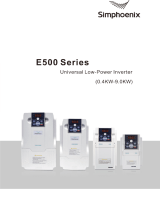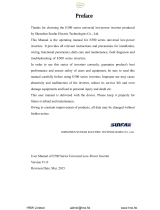
Contents
Paragraph
Number Title
Page
Number
e500 Application Binary Interface User’s Guide
2.3.5.2.2 Function with Both 32-Bit and 64-Bit Nonvolatile Usage .................... 2-27
2.3.5.3 Maximum Amount of Stack Frame Padding ............................................. 2-27
2.4 Operating System Interface—Optional.............................................................. 2-28
2.4.1 Virtual Address Space.................................................................................... 2-28
2.4.2 Page Size........................................................................................................ 2-28
2.4.3 Virtual Address Assignments ......................................................................... 2-28
2.4.4 Managing the Process Stack .......................................................................... 2-30
2.4.5 Coding Guidelines ......................................................................................... 2-30
2.4.6 Processor Execution Modes........................................................................... 2-31
2.5 Exception Interface—Optional .......................................................................... 2-31
2.6 Process Initialization—Optional........................................................................ 2-32
2.6.1 Registers......................................................................................................... 2-33
2.6.2 Process Stack ................................................................................................. 2-33
2.7 Coding Examples............................................................................................... 2-36
2.7.1 Code Model Overview ................................................................................... 2-37
2.7.2 Function Prologue and Epilogue.................................................................... 2-38
2.7.3 Register Saving and Restoring Functions ...................................................... 2-39
2.7.3.1 Background................................................................................................ 2-39
2.7.3.2 Calling Conventions................................................................................... 2-40
2.7.3.3 Details about the Functions ....................................................................... 2-41
2.7.4 Profiling ......................................................................................................... 2-45
2.7.5 Data Objects................................................................................................... 2-46
2.7.6 Function Calls ................................................................................................ 2-48
2.7.7 Branching....................................................................................................... 2-50
2.7.8 Dynamic Stack Space Allocation................................................................... 2-51
2.8 DWARF Definition ............................................................................................ 2-52
2.8.1 DWARF Release Number .............................................................................. 2-52
2.8.2 DWARF Register Number Mapping.............................................................. 2-53
2.8.3 Address Class Codes...................................................................................... 2-55
2.9 SPE Register Core Dump Image Specification.................................................. 2-55
Chapter 3
Object Files
3.1 ELF Header.......................................................................................................... 3-1
3.1.1 Machine Information ....................................................................................... 3-1
3.2 Sections................................................................................................................ 3-1
3.2.1 Special Sections ............................................................................................... 3-1
3.3 Small Data Areas.................................................................................................. 3-3
3.3.1 Small Data Area (.sdata and .sbss)................................................................... 3-4
3.3.2 Small Data Area 2 (.PPC.EMB.sdata2 and .PPC.EMB.sbss2) ........................ 3-5
3.3.3 Small Data Area 0 (.PPC.EMB.sdata0 and .PPC.EMB.sbss0) ........................ 3-6
Freescale Semiconductor, I
Freescale Semiconductor, Inc.
For More Information On This Product,
Go to: www.freescale.com
nc
.
..























